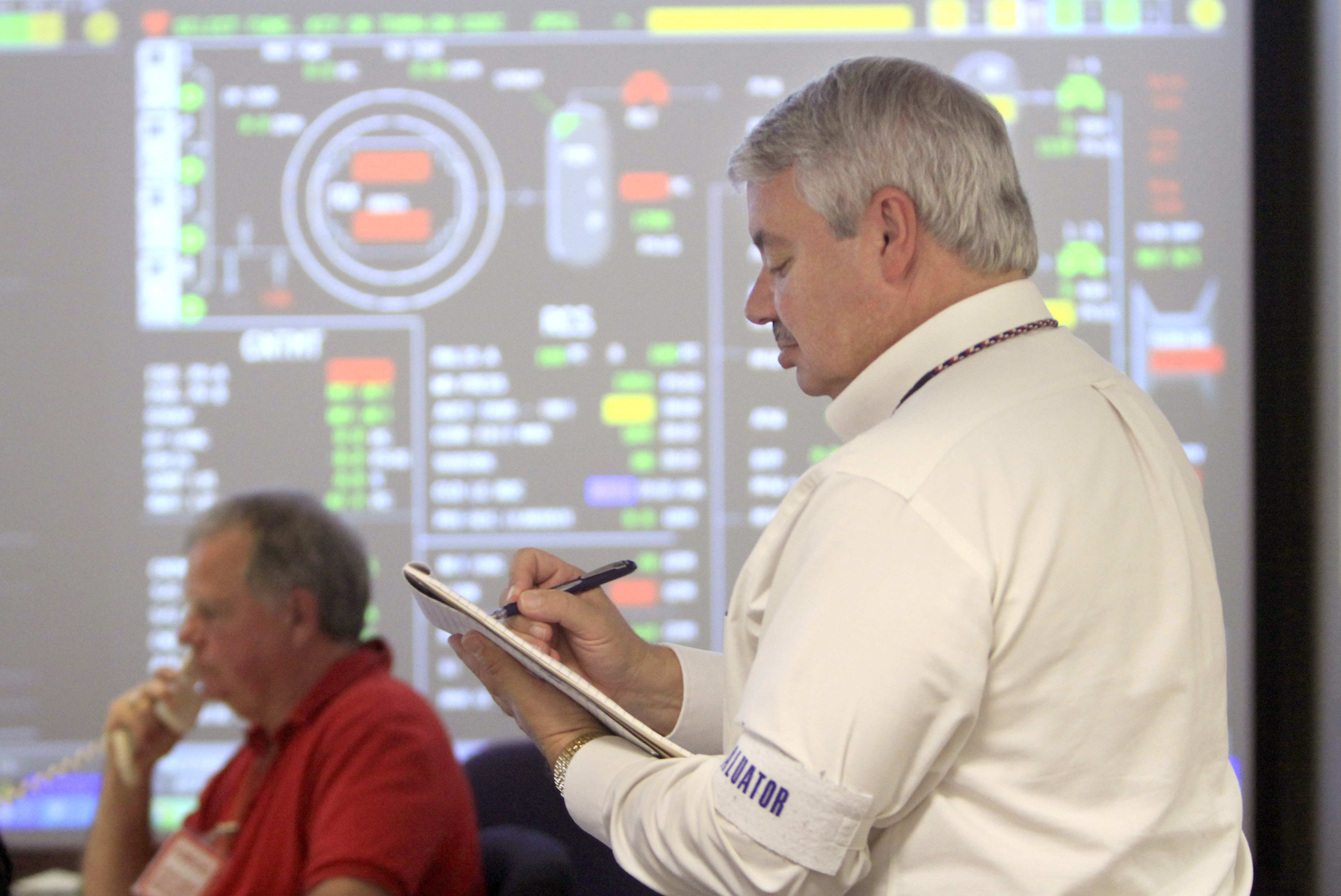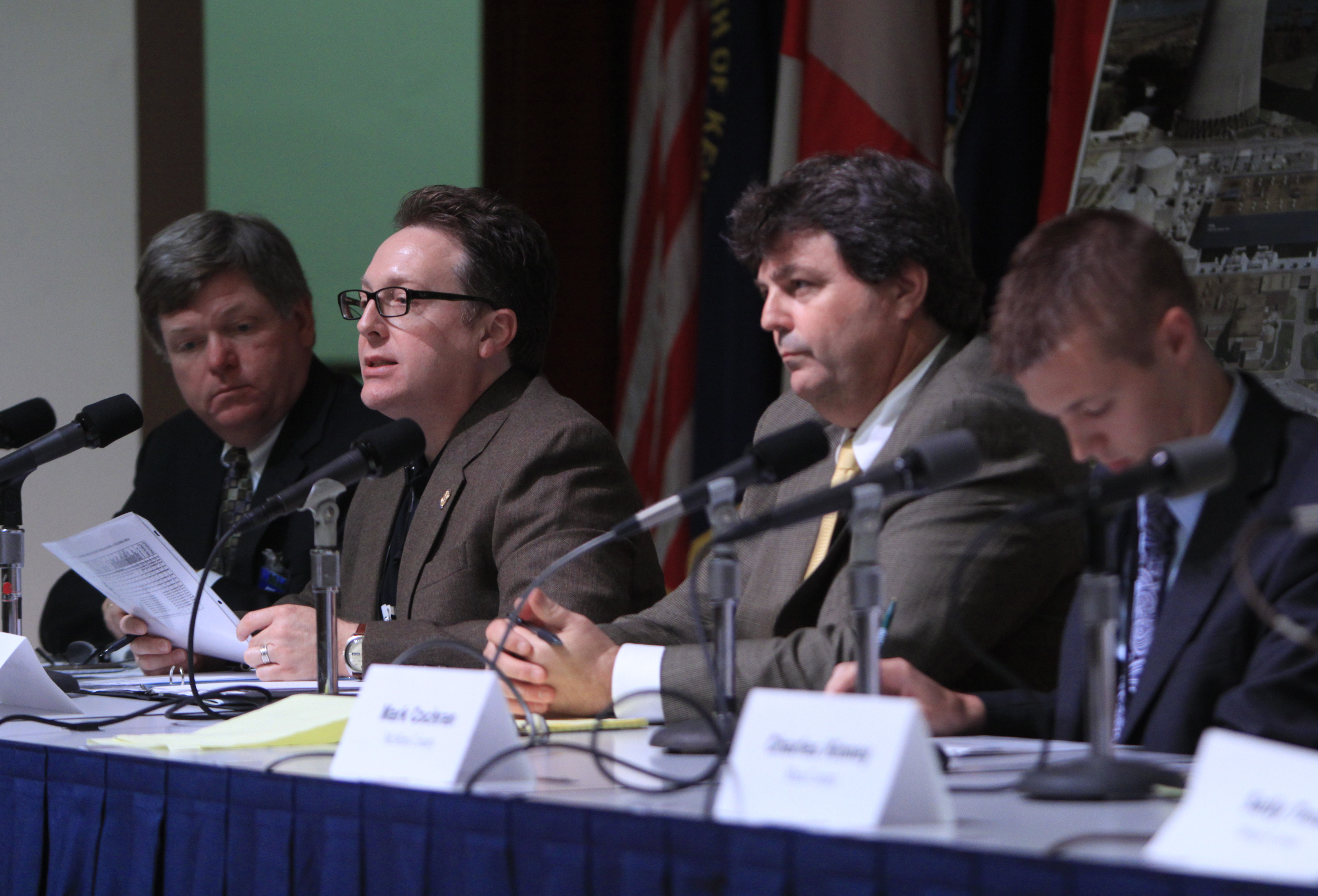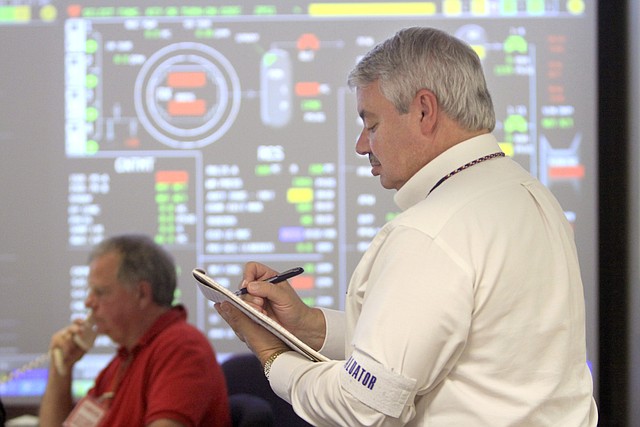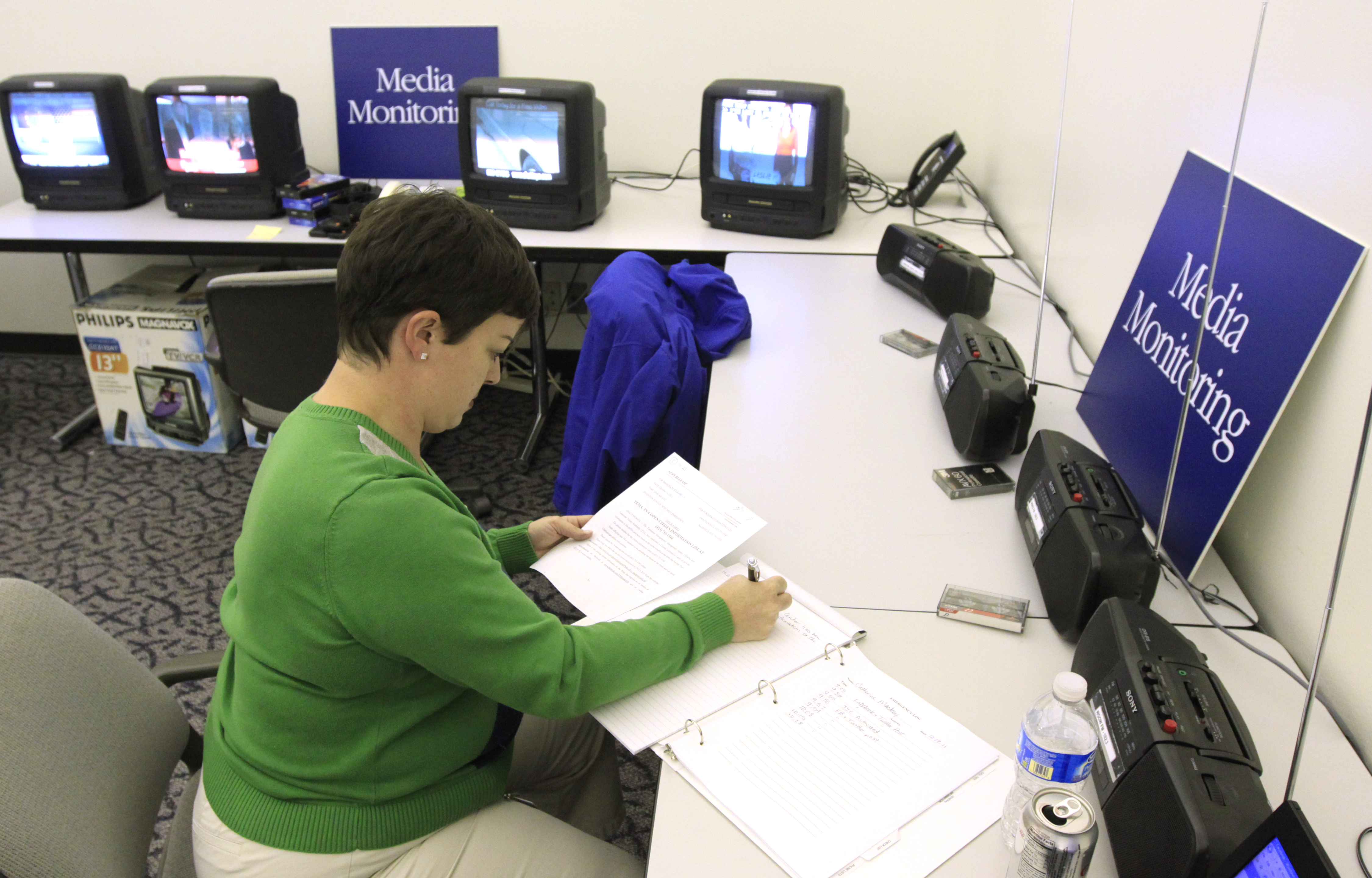TVA and local responders test local emergency plan during Watts Bar Nuclear Plant drill
Friday, January 1, 1904
 Walter Lee, manager of Nuclear Emergency Preparedness, leads the evaluation as TVA conducts an emergency preparedness drill in the Central Emergency Control Center in downtown Chattanooga early Wednesday morning. The drill involved a simulated explosion releasing a small amount of radiation at TVA's Watt's Bar Unit 1 power plant.
Walter Lee, manager of Nuclear Emergency Preparedness, leads the evaluation as TVA conducts an emergency preparedness drill in the Central Emergency Control Center in downtown Chattanooga early Wednesday morning. The drill involved a simulated explosion releasing a small amount of radiation at TVA's Watt's Bar Unit 1 power plant. Dean Flener, with the State of Tennessee, second from left, answers questions from a mock media pool consisting of Lee University students as TVA conducts an emergency preparedness drill involving approximately 1,000 people Wednesday. The drill involved a simulated explosion releasing a small amount of radiation at TVA's Watt's Bar Unit 1 power plant.
Dean Flener, with the State of Tennessee, second from left, answers questions from a mock media pool consisting of Lee University students as TVA conducts an emergency preparedness drill involving approximately 1,000 people Wednesday. The drill involved a simulated explosion releasing a small amount of radiation at TVA's Watt's Bar Unit 1 power plant.The news was bad: There had been an explosion in the diesel area of Watts Bar Nuclear plant, then a steam vent began leaking radiation, leading to the evacuation of everyone within a 10-mile radius to the east, south and west of the plant.
The reality was better: It was all a drill.
"Every two years, we have an evaluated event where they look at our performance and ensure that our plan will do what it needs to do, and that is keep the public's health and safety as our top priority," said TVA spokesman Ray Golden.
About 1,000 Tennessee Valley Authority workers, along with and state and local emergency responders in McMinn, Meigs and Rhea counties, took part Wednesday in the mock emergency preparedness exercise at the plant and in TVA's downtown Chattanooga headquarters.
TVA and all the responders will be graded on their planning and response.
Golden and spokespersons from the Tennessee Emergency Management Agency and local responders even sparred with mock journalists -- students from Lee University who were impatient with the protocol of a press conference that delayed their question-and-answer session.
All the while, evaluators from the Nuclear Regulatory Commission and the U.S. Federal Emergency Management Agency watched the role-playing at the Spring City plant, at a van sampling air for leaked radiation, in the emergency control room on a top floor of TVA's headquarters and even during the press conference.
NRC evaluators kept a check sheet and notes on TVA moves; FEMA graded the state and county responders.
"Our task is to get them as close as we can [to enacting an realistic event] without involving the public," said Lawrence Robertson, a FEMA evaluator.
On Friday, the evaluators will reveal the scores in a public meeting at 11 a.m. in Sweetwater, Tenn.
WHAT'S NEXTRating: Evaluators will reveal the scores in a public meeting.When: 11 a.m. FridayWhere: Magnuson Hotel, 1421 Murray's Chapel Road, Sweetwater, Tenn.Source: TVAHOW CLOSE?Calculations of 2010 census data for msnbc.com show how many people live close to TVA nuclear plants.Sequoyah10 miles: 99,66450 miles: 1,079,868Watts Bar10 miles: 18,45250 miles: 1,186,648Browns Ferry10 miles: 39,93050 miles: 977,941
Golden said TVA and local responders generally do well on the graded exercises. With three nuclear plants, the utility is drilling often.
"We've had 30 years of experience," Golden said. "Each time we find little opportunities to improve. And I'm sure we will today, too."
In a worst-case scenario, NRC and FEMA could require TVA to do a remedial drill, he said.
"And in a worst-worst-case scenario -- if they just lost confidence in us -- they could order us to shut down. That would be extremely rare, but it is within their purview," he said.
Golden said the drills are confidence boosters.
"It's real important, and it shows the public we have a plan," he said.
Lessons learned from the March meltdown and radiation leaks at Japan's Fukushima Dai-ichi nuclear plant after an earthquake and subsequent tsunami, as well as during 1979's near-meltdown at the Three Mile Island plant near Harrisburg, Pa., showed that, "by having a plan, it's simply a matter of implementing it. You're not just going off the cuff," he said.
David Lochbaum, a former TVA nuclear operator and NRC training instructor who now monitors safety issues at the nation's 104 nuclear reactors for the Union of Concerned Scientists, agreed the biennial exercises have value in training local, state, and federal responders to prepare for a real accident.
"It's one thing to read an emergency procedure or participate in computer-based training. But it's more realistic to role-play those assignments to better understand how one's assignment fits into all the other responders' duties," Lochbaum said.
But the exercises also have pitfalls and shouldn't lull the agencies or the public, he said. In a test, responders faced with a decision on whether conditions warrant calling an emergency have a bias to sound the alarm.
"After all, all the responders didn't gather to watch nothing. During a real emergency, the bias is exactly opposite -- things couldn't be so bad as to declare an emergency and call in the cavalry," Lochbaum said.
The exercises obviously aren't a real test, he said, so people are never really evacuated from homes, schools, hospitals, prisons or retirement homes.
"The most important part of the whole thing -- protecting people should radiation be released -- is never, ever tested," Lochbaum said. "So the exercises are good training vehicles, but they don't demonstrate that people will be protected."


